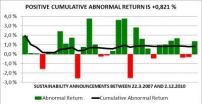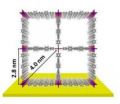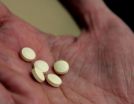(Press-News.org) Scientists have demonstrated a new way to investigate mechanisms at work in Alzheimer's and other neurodegenerative diseases, which also could prove useful in the search for effective drugs. For new insights, they turned to the zebrafish, which is transparent in the early stages of its life. The researchers developed a transgenic variety, the "MitoFish," that enables them to see – within individual neurons of living animals – how brain diseases disturb the transport of mitochondria, the power plants of the cell.
Neurodegenerative diseases such as Alzheimer's, Parkinson's, ALS (amyotrophic lateral sclerosis), and MS (multiple sclerosis) are quite different in their effects on patients' cognitive and motor functions, behavior, and prognosis. Yet on the level of individual neurons, common mechanisms can be observed that either cause or accompany nerve degeneration in a number of different diseases. One of these is a disturbance in the transport of mitochondria, organelles that play several vital roles in the life of a cell — above all, delivering energy where it is needed. And in a neuron, an extremely power-hungry cell, that means moving mitochondria all the way down its longest extension, the axon. Studying mitochondria transport in other animal models of neurodegenerative disease, particularly in mice, has been revealing. But the MitoFish model opens up new possibilities.
The new model was jointly developed in the labs of Prof. Thomas Misgeld of the Technische Universität München (TUM) and Dr. Bettina Schmid, a senior scientist of the German Center for Neurodegenerative Diseases (DZNE) based at the institute of LMU Prof. Christian Haass. "This collaboration has provided a system," Misgeld says, "with which we can try to understand the traffic rules or the life cycle of a given organelle, in this case mitochondria, in the context of a nerve cell that's existing in its physiological environment, where it is developing and changing. Most of these things we don't understand well enough to model them in another setting, so we have the organism do it for us."
The MitoFish is both readily manipulated, enabling researchers to pose specific questions, and literally transparent — allowing non-invasive in vivo observation of changes relevant to disease processes. It is possible to image a whole, living neuron over time and to follow the movements of mitochondria within it. "The zebrafish is an established genetic model," Schmid explains, "which means you can bring foreign genes or certain proteins into a fish to test hypotheses about basic biology, disease mechanisms, or potential therapies. And because the early embryo is transparent, you can label specific nerve cells with a fluorescent protein and then look at them in an intact, living animal."
The researchers stress that this new window into the neurodegenerative diseases could not have been opened without combining complementary expertise: from Misgeld's lab, imaging and analysis focused on organelle dynamics; and from Schmid's lab, development of transgenic zebrafish models that are stable enough for long-term study. The first authors of the team's report in the Journal of
Neuroscience are Gabriela Plucinska (TUM) and Dominik Paquet (DZNE). The collaboration leaders are linked through participation in the newly established Excellence Cluster SyNergy (Munich Cluster for Systems Neurology), as well as in the DZNE and the Excellence Cluster CIPSM.
"Just talking to each other," Misgeld recalls, "we realized that this would be a perfect match — that she would have situations in which the kind of trafficking question I wanted to look at could be of high relevance, and that she had all the tools we would need to carry this forward."
The driving force, they emphasize, is to understand more about Alzheimer's and other brain diseases to help steer the search for therapies in the right direction. "We need to understand how the machine works before we can operate it," Schmid says, "and modern biology is so technically advanced that no lab can be cutting-edge across the whole range of needed expertise."
INFORMATION:
This work was supported by the German Research Foundation (DFG) via SFB 596 (Molecular Mechanisms of Neurodegeneration), the TUM Institute for Advanced Study, and Excellence Clusters SyNergy (Munich Cluster for Systems Neurology) and CIPSM (Center for Integrated Protein Science Munich); the European Community's Seventh Framework Programme (FP7/2007-2013) under Grant agr. no. 200611 (MEMOSAD); and the Alexander von Humboldt Foundation.
Original publication:
Gabriela Plucińska, Dominik Paquet, Alexander Hruscha, Leanne Godinho, Christian Haass, Bettina Schmid, and Thomas Misgeld. In Vivo Imaging of Disease-Related Mitochondrial Dynamics in a Vertebrate Model System. The Journal of Neuroscience, 32(46):16203-16212.
DOI:10.1523/JNEUROSCI.1327-12.2012.
Contact:
Prof. Thomas Misgeld
Technische Universitaet Muenchen
Chair for Biomolecular Sensors / Institute of Neuroscience
Biedersteinerstr. 29, 80802 Munich, Germany
Tel: +49 (0)89 4140 3512
E-mail: thomas.misgeld@lrz.tum.de
Web: http://www.misgeld-lab.me.tum.de/new/
Dr. Bettina Schmid
German Center for Neurodegenerative Diseases (DZNE) - Munich
LMU Munich
Adolf Butenandt Institute / Metabolic Biochemistry
Schillerstr. 44, 80336 Munich, Germany
Tel: +49 (0)89 2180 75451
E-mail: beschmid@med.uni-muenchen.de
Web: http://www.biochemie.abi.med.uni-muenchen.de/haass/zebrafish/index.html
Technische Universitaet Muenchen (TUM) is one of Germany's leading universities. It has roughly 480 professors, 9,000 academic and non-academic staff, and 32,000 students. It focuses on the engineering sciences, natural sciences, life sciences, medicine, and economic sciences. After winning numerous awards, it was selected as an "Elite University" in 2006 and 2012 by the Science Council (Wissenschaftsrat) and the German Research Foundation (DFG). In both international and national rankings, TUM is rated as one of Germany's top universities. TUM is dedicated to the ideal of a top-level research-based entrepreneurial university. The university's global presence includes offices in Beijing (People's Republic of China), Boston (USA), Brussels (Belgium), Cairo (Egypt), Mumbai (India) and Sao Paulo (Brazil). The German Institute of Science and Technology (GIST), founded in 2002 in Singapore, is the first research campus of a German university abroad. www.tum.de
See-through 'MitoFish' opens a new window on brain diseases
New model for in vivo studies of mitochondria transport in nerve cells
2012-12-05
ELSE PRESS RELEASES FROM THIS DATE:
Sustainable business innovation adds firms' market value
2012-12-05
Sustainable business innovation is good business; researchers from Aalto University, Finland have proved. The researchers tested how sustainability business innovations and the market value of companies in the construction sector are connected. The study is a first of its kind. An event study model was used to analyse large construction sector companies in several European countries as well as Australia.
The most important finding of the study is that a positive and statistically significant association exists between sustainability innovation announcements and the market ...
Creativity and linguistic skills important for immersion in World of Warcraft
2012-12-05
The sense of immersion in role-play and computer games is sometimes viewed as dangerous, as players' strong perceptions of fictional worlds are assumed to make them lose contact with reality. On the other hand, players' immersion also implies a potential for improved learning, since it enables them to 'experience' new places and historical eras. Yet a new study from the University of Gothenburg, Sweden, shows that immersion in online role-play games requires a lot of hard work.
Gaming researcher Jonas Linderoth, at the Department of Education, Communication and Learning, ...
Adult antiviral drug effective in suppressing hepatitis B in teens
2012-12-05
A recent clinical trial found that the adult antiviral drug, tenofovir disoproxil fumarate (tenofovir DF), is safe and effective in treating adolescents with hepatitis B virus (HBV). Trial results published in the December issue of Hepatology, a journal of the American Association for the Study of Liver Diseases (AASLD), show that tenofovir DF suppressed HBV in 89% of pediatric participants.
Chronic HBV is a major health burden that studies estimate affects 350 million people worldwide, with 600,000 deaths attributed to this chronic disease. The Centers for Disease Control ...
In US first, Johns Hopkins surgeons implant brain 'pacemaker' for Alzheimer's disease
2012-12-05
Researchers at Johns Hopkins Medicine in November surgically implanted a pacemaker-like device into the brain of a patient in the early stages of Alzheimer's disease, the first such operation in the United States. The device, which provides deep brain stimulation and has been used in thousands of people with Parkinson's disease, is seen as a possible means of boosting memory and reversing cognitive decline.
The surgery is part of a federally funded, multicenter clinical trial marking a new direction in clinical research designed to slow or halt the ravages of the disease, ...
Reading history through genetics
2012-12-05
New York, NY—December 5, 2012—Computer scientists at Columbia's School of Engineering and Applied Science have published a study in the November 2012 issue of The American Journal of Human Genetics (AJHG) that demonstrates a new approach used to analyze genetic data to learn more about the history of populations. The authors are the first to develop a method that can describe in detail events in recent history, over the past 2,000 years. They demonstrate this method in two populations, the Ashkenazi Jews and the Masai people of Kenya, who represent two kinds of histories ...
Large pores
2012-12-05
This press release is available in German.
Researchers of the KIT Institute of Functional Interfaces (IFG), Jacobs University Bremen, and other institutions have developed a new method to produce metal-organic frameworks (MOFs). By means of the so-called liquid-phase epitaxy, the scientists succeeded in producing a new class of MOFs with a pore size never reached before. These frameworks open up interesting applications in medicine, optics, and photonics. The new class of MOFs, called "SURMOF 2", is presented in the "Nature Scientific Reports" journal.
Metal-organic ...
Pokemon provides rare opening for IU study of face-recognition processes
2012-12-05
BLOOMINGTON, Ind. -- At a Bloomington, Ind., toy store, kids ages 8 to 12 gather weekly to trade Pokemon cards and share their mutual absorption in the intrigue and adventure of Pokemon.
This may seem an unlikely source of material to test theories in cognitive neuroscience. But that is where Indiana University brain scientists Karin Harman James and Tom James were when an idea took hold.
"We were down at the club with our son, watching the way the kids talked about the cards, and noticed it was bigger than just a trading game," Tom James said.
Pokemon has since ...
'Resistance' to low-dose aspirin therapy extremely rare
2012-12-05
PHILADELPHIA — Roughly one-fifth of Americans take low-dose aspirin every day for heart-healthy benefits. But, based on either urine or blood tests of how aspirin blocks the stickiness of platelets – blood cells that clump together in the first stages of forming harmful clots – up to one third of patients are deemed unlikely to benefit from daily use. Such patients are called "aspirin resistant." Clots are the main cause of most heart attacks and strokes.
In people who have suffered a heart attack, low-dose aspirin reduces the chances of a second event by about one fifth, ...
RI Hospital: Standardized road test results differ from older adults' natural driving
2012-12-05
PROVIDENCE, R.I. – If you're thinking that little old lady driving 35 miles per hour in the passing lane shouldn't be behind the wheel, you may be right. Studies at Rhode Island Hospital, and elsewhere, have shown that our driving abilities decline with age, and for those with cognitive issues such as dementia, it can be even worse.
A standardized road test – much like the one teenagers take to receive their learner's permit and driver's license – is often used to measure an individual's performance, including those of older adults. But researchers at the Rhode Island ...
New test adds to scientists' understanding of Earth's history, resources
2012-12-05
GAINESVILLE, Fla. — A new study co-authored by a University of Florida researcher provides the first direct chronological test of sequence stratigraphy, a powerful tool for exploring Earth's natural resources.
The model allows geologists to better understand how sedimentary rocks are related to one another in time and space and predict what types of rocks are located in different areas. The information may help scientists more reliably interpret various aspects of Earth's history such as long-term climate changes or extinction events, and also benefit companies searching ...
LAST 30 PRESS RELEASES:
New expert guidance urges caution before surgery for patients with treatment-resistant constipation
Solar hydrogen can now be produced efficiently without the scarce metal platinum
Sleeping in on weekends may help boost teens’ mental health
Study: Teens use cellphones for an hour a day at school
After more than two years of war, Palestinian children are hungry, denied education and “like the living dead”
The untold story of life with Prader-Willi syndrome - according to the siblings who live it
How the parasite that ‘gave up sex’ found more hosts – and why its victory won’t last
When is it time to jump? The boiling frog problem of AI use in physics education
Twitter data reveals partisan divide in understanding why pollen season's getting worse
AI is quick but risky for updating old software
Revolutionizing biosecurity: new multi-omics framework to transform invasive species management
From ancient herb to modern medicine: new review unveils the multi-targeted healing potential of Borago officinalis
Building a global scientific community: Biological Diversity Journal announces dual recruitment of Editorial Board and Youth Editorial Board members
Microbes that break down antibiotics help protect ecosystems under drug pollution
Smart biochar that remembers pollutants offers a new way to clean water and recycle biomass
Rice genes matter more than domestication in shaping plant microbiomes
Ticking time bomb: Some farmers report as many as 70 tick encounters over a 6-month period
Turning garden and crop waste into plastics
Scientists discover ‘platypus galaxies’ in the early universe
Seeing thyroid cancer in a new light: when AI meets label-free imaging in the operating room
Neutrophil-to-lymphocyte ratio may aid risk stratification in depressive disorder
2026 Seismological Society of America Annual Meeting
AI-powered ECG analysis offers promising path for early detection of chronic obstructive pulmonary disease, says Mount Sinai researchers
GIMM uncovers flaws in lab-grown heart cells and paves the way for improved treatments
Cracking the evolutionary code of sleep
Medications could help the aging brain cope with surgery, memory impairment
Back pain linked to worse sleep years later in men over 65, according to study
CDC urges ‘shared decision-making’ on some childhood vaccines; many unclear about what that means
New research finds that an ‘equal treatment’ approach to economic opportunity advertising can backfire
Researchers create shape-shifting, self-navigating microparticles
[Press-News.org] See-through 'MitoFish' opens a new window on brain diseasesNew model for in vivo studies of mitochondria transport in nerve cells




